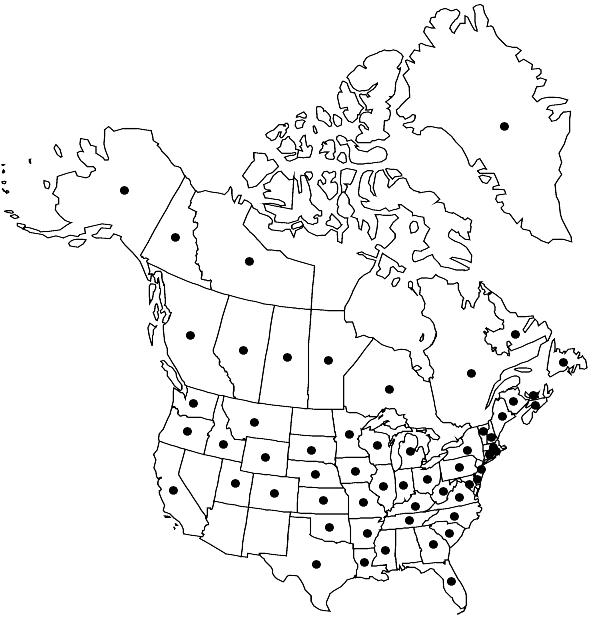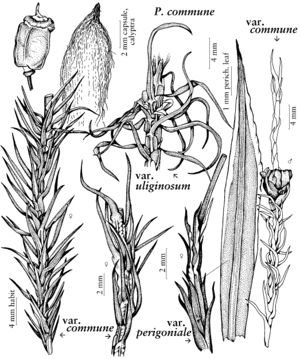Polytrichum commune var. commune
Plants highly variable in size and habit but usually rather tall and robust. Stems (2–)5–10(–70) cm. Leaves loosely imbricate to rather distant; sheath clasping the stem and usually plainly visible wet or dry; blade typically divergent and sharply toothed to the base; marginal cells of lamellae in section broader than those beneath, retuse to distinctly notched, with prominent knobs; perichaetial leaves not markedly longer than the foliage leaves, ending in a short, roughened spinulose tip. Capsule short-rectangular.
Habitat: Moist organic soil in wet habitats, pastures, old fields, and meadows, peatlands, margins of bogs or swamps, often covering extensive areas, low to moderate elevations, widespread in the boreal forest, rare north of the tree line and absent from the high Arctic (D. G. Long 1985)
Distribution

Greenland, Alta., B.C., Man., N.B., Nfld. and Labr., N.W.T., N.S., Ont., P.E.I., Que., Sask., Yukon, Alaska, Ark., Calif., Colo., Conn., Del., Fla., Ga., Idaho, Ill., Ind., Iowa, Kans., Ky., La., Maine, Md., Mass., Mich., Minn., Miss., Mo., Mont., Nebr., N.H., N.J., N.Y., N.C., Ohio, Okla., Oreg., Pa., R.I., S.C., S.Dak., Tenn., Tex., Utah, Vt., Va., Wash., W.Va., Wis., Wyo., n, c Europe, n, e Asia, n Africa, Atlantic Islands (Macaronesia), Pacific Islands (Hawaii, New Zealand), Australia.
Discussion
Selected References
None.
